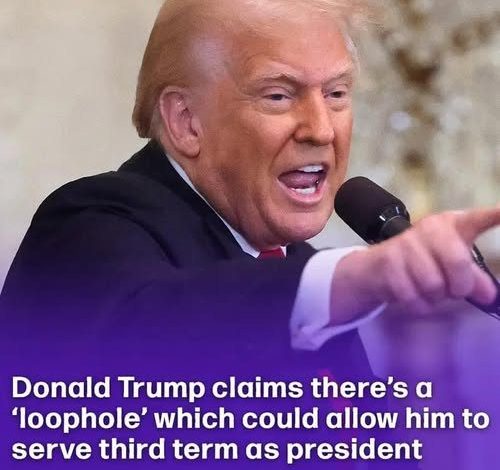
Former Leader Claims Constitutional Loophole Could Permit Third Term
A recent political rally has reopened the discussion about presidential term limits outlined in the U.S. Constitution. During the event, a former national leader made remarks suggesting that a legal “loophole” might, under certain technical interpretations, allow a president to serve a third term. Although the comments were delivered in a somewhat humorous tone, they have since sparked serious debate among legal scholars, political analysts, and the wider public.
The proposal centers on the possibility that certain “technicalities” in the constitutional framework could be read in a way that might justify an additional term in office, a claim that stands in stark contrast to the longstanding rule established by the 22nd Amendment. Ratified in 1951, this amendment unambiguously states that “No person shall be elected to the office of the President more than twice.” Instituted in the wake of concerns over the concentration of power, this provision was designed to ensure a balanced distribution of executive authority by limiting presidents to two terms.
In response to the recent remarks, numerous constitutional experts have firmly rejected the notion of any ambiguity in the law. “The law is crystal clear,” one constitutional scholar explained. “There is no provision, nor any credible legal interpretation, that would permit a third term under the current law.” This consensus among legal professionals reinforces the idea that any discussion about extending presidential terms beyond the established limit risks undermining public confidence in democratic institutions.
While the idea of a third term might resonate with a segment of the political base that desires prolonged leadership, many experts warn that even the suggestion—whether made in jest or seriously—can set a dangerous precedent. The potential for such a reinterpretation not only challenges the legal integrity of the constitutional framework but also raises broader concerns about the erosion of checks and balances in the governance system.
Ultimately, any modification to the term limits would require a formal constitutional amendment—a process that demands extensive bipartisan support and the ratification of both Congress and the states. For the time being, the prevailing legal consensus remains firm: a president is limited to two terms, with no legal loophole offering a path to a third.
This renewed debate has highlighted the tension between political ambition and constitutional safeguards, reminding us that the enduring principles of democratic governance rely on both a respect for tradition and the rigorous enforcement of established legal limits. As the controversy continues to unfold, it serves as a powerful reminder of the importance of adhering to the rule of law and the critical role that both constitutional interpretation and public trust play in maintaining the stability of the nation’s democratic institutions.




